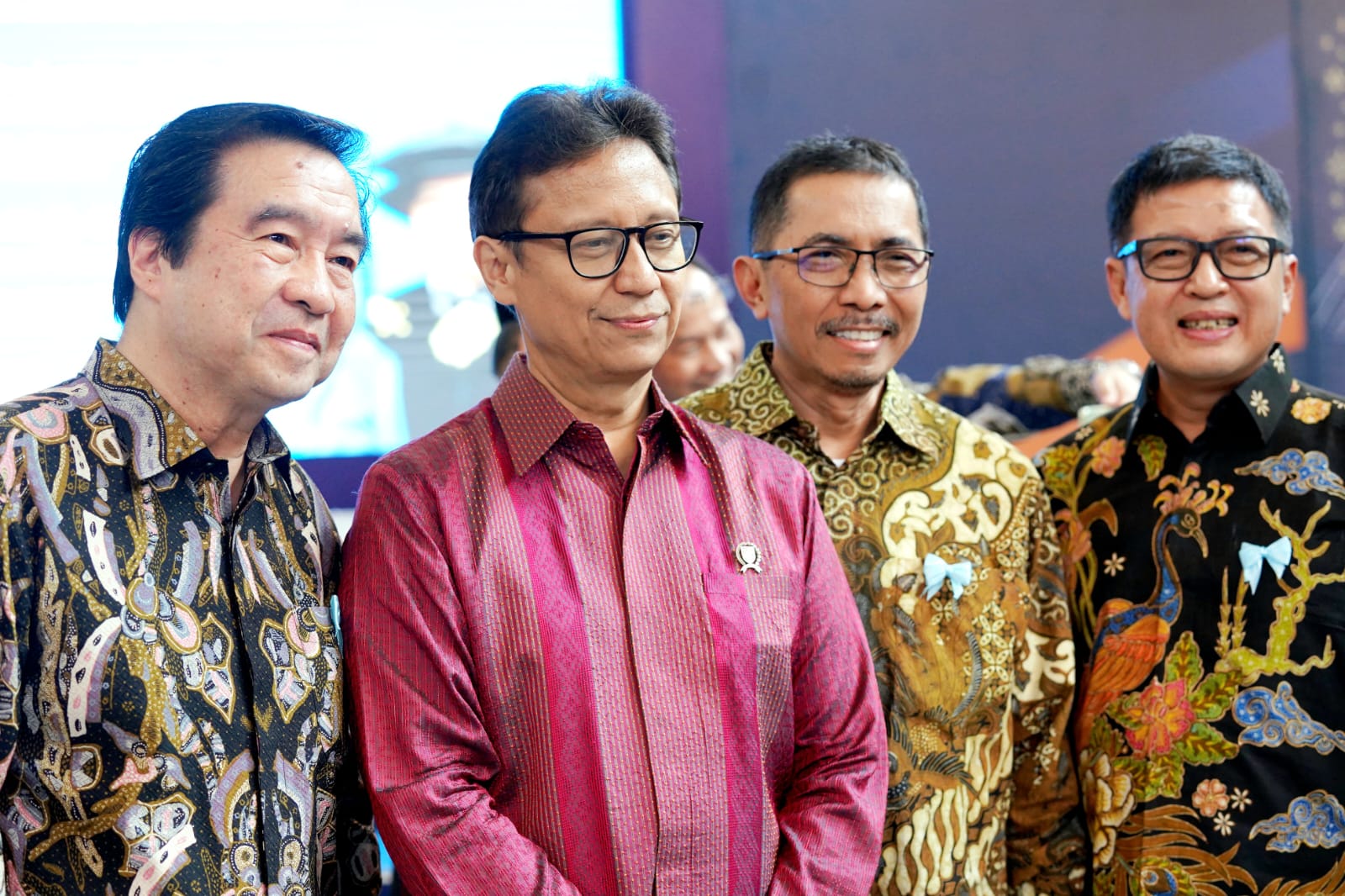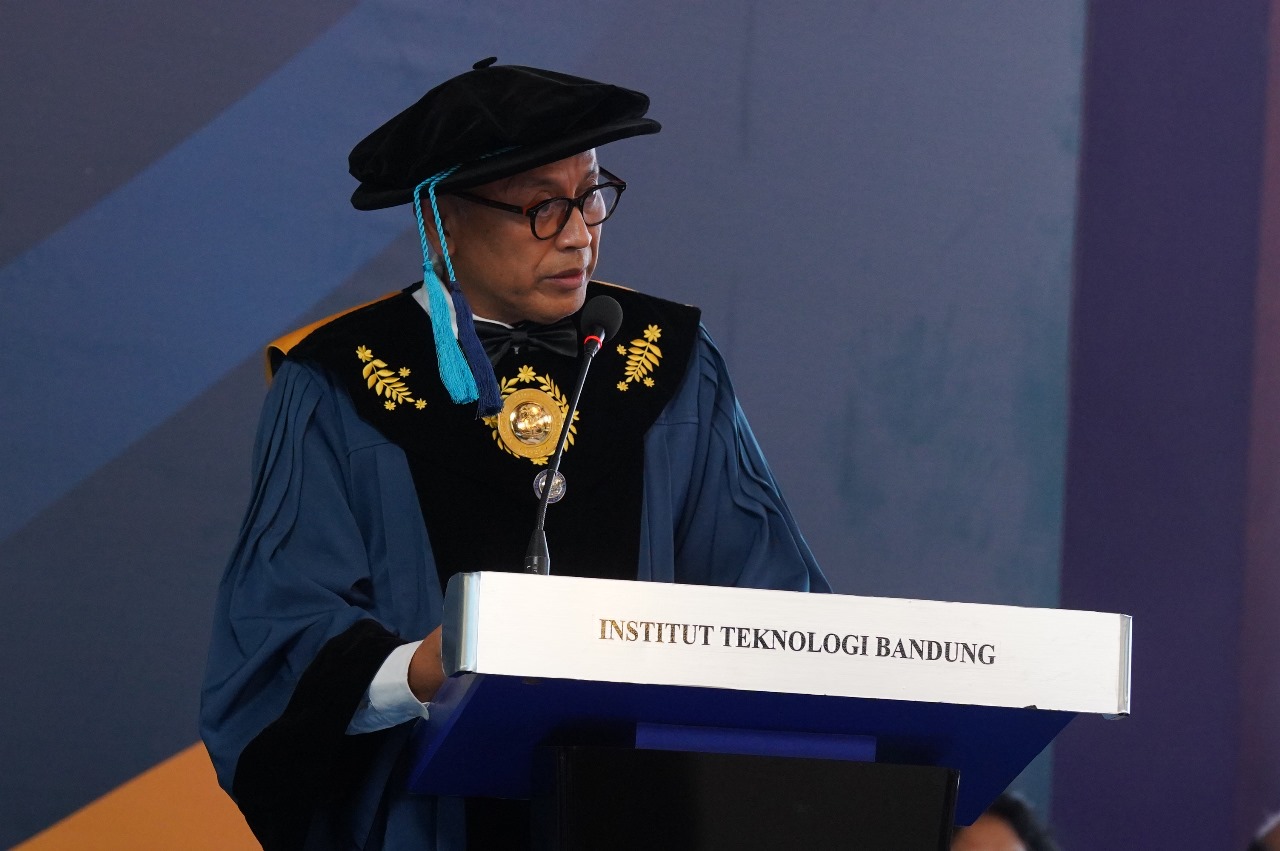Scientific Oration by Prof. Alexander Iskandar: Light-based Science and Technology at the Nanometer Scale

BANDUNG, itb.ac.id - The demands of future technology continue to increase with the characteristics of miniaturization, efficiency and high functionality, causing light-based device designs to now reach the nanometer size. Therefore, scientific understanding and knowledge is needed to optimize it.
This topic was addressed by Prof. Drs. Alexander A.P. Iskandar, Ph.D. in his scientific oration titled "Nanophotonics: Light-Based Science and Technology at the Nanometer Scale".
This oration was delivered during the Institut Teknologi Bandung Professors’ Forum (FGB ITB), in the West Hall, ITB Ganesha Campus, Bandung, Saturday (17/2/2024).
Prof. Alex is currently serving as Chair of the Physics of Magnetism and Photonic Research Group. He is also active in conducting research in the field of nanophotonics and has published 71 scientific articles in national and international journals. Apart from that, Prof. Alex also received many awards, one of which was the 2022 Satya Lencana Karya Satya XXX award.
Nanophotonics is a branch of science that studies the behavior and interactions of light at nanometer sizes. “The nanometer size is extremely small. "A strand of hair measures 100 micrometers in size. If divided into 1000 equal parts, each part would be 100 nanometers," he explained.
With this extremely small size, several physical phenomena become dominant. Among these are near field wave interactions, surface plasmon resonance (SPR), and multipolar electromagnetic moment excitation. It is the control and manipulation of these phenomena that enables the use of light in cutting-edge technology.
With approximately 20 years of research in the field of nanophotonics, Prof. Alex has acquired a lot of knowledge, one of which was how to improve the functionality of the device he designs. For this reason, several steps have been taken:
1. Adding defects or breaking the symmetry of the system;
2. Using the nonlinearity properties of the material used;
3. Partnering one device with another device to create an integrated device.
In connection with increasing this functionality, several basic component designs for optical-based devices have been developed. These include filtering devices, non-conventional sensing, optical switches, and integrated devices for communication.
"To master this cutting-edge technology and its application, a strong foundation in physics is essential. Therefore, it is fitting that engineers from a leading Institute of Technology in Indonesia possess a solid understanding of physics" said Prof. Alex, closing his oration.
Reporter: Erika Winfellina Sibarani (Mathematics, 2021)
Translator: Hanna Daniela Ayu (Aerospace Engineering, 2021)
Editor: Sherina Wijaya (Geological Engineering, 2019)

scan for download







